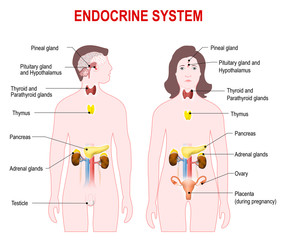-
A
Rete testis
-
B
Seminiferous tubule
-
C
Leydig cell
-
D
Scrotum
C
Answer:
C
Testosterone, the male sex hormone, is produced in the interstitial cells or Leydig cells. These cells are located in the spaces between the seminiferous tubules inside the lobules of the testes. Leydig cells are endocrine cells that secrete testosterone in response to luteinizing hormone (LH) produced by the pituitary gland. The testosterone secreted by Leydig cells plays a crucial role in the development and maintenance of male reproductive tissues such as the testes, epididymis, vas deferens, seminal vesicles, prostate gland, and penis.
Testosterone also plays a crucial role in male sexual development and function. During fetal development, testosterone stimulates the differentiation of the male external genitalia. In puberty, testosterone stimulates the growth of the penis and testes, the development of secondary sexual characteristics such as pubic and facial hair, and the deepening of the voice. Testosterone also promotes the development of muscle mass and bone density, and it contributes to the regulation of mood and cognition.
Low levels of testosterone can lead to a range of symptoms in men, including reduced sex drive, erectile dysfunction, decreased muscle mass and strength, decreased bone density, and mood disturbances. In some cases, testosterone replacement therapy may be prescribed to treat these symptoms.
In summary, the male sex hormone testosterone is produced in the Leydig cells located in the spaces between the seminiferous tubules inside the testes. Testosterone plays a crucial role in the development and maintenance of male reproductive tissues and sexual function, as well as in the regulation of mood and cognition.
 Integumentary system
Integumentary system  Embedded system
Embedded system  Endocrine system
Endocrine system  জীবদেহের গঠন
জীবদেহের গঠন  কোশের আকৃতি
কোশের আকৃতি  মানুষের দেহের কোশের আকৃতি
মানুষের দেহের কোশের আকৃতি  বিভিন্ন শারীরবৃত্তীয় কাজ
বিভিন্ন শারীরবৃত্তীয় কাজ  উদ্ভিদদেহে ও প্রাণীদেহে কোশের কাজের বিশেষত্ব ও কলার প্রকারভেদ
উদ্ভিদদেহে ও প্রাণীদেহে কোশের কাজের বিশেষত্ব ও কলার প্রকারভেদ  প্রাণীকোশের গঠন
প্রাণীকোশের গঠন